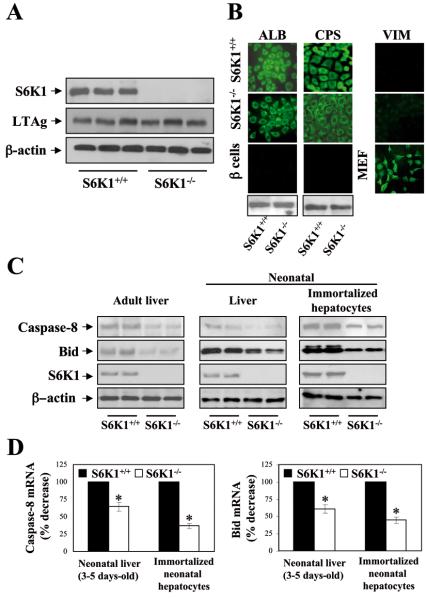Figure 1. Generation and characterization of immortalized hepatocyte cell lines from S6K1+/+ and S6K1−/− mice.
A. S6K1+/+ and S6K1−/− immortalized hepatocytes cultured under growth-promoting conditions (DMEM plus 10% FS) were lysed and S6K1 and LTAg expression of three independent cell lines from each genotype was analyzed in whole-cell lysates by western blot. The anti-β̣-actin antibody was used as a loading control. B. Immunofluorescence detection of albumin (ALB), carbamoyl phophate synthetase (CPS) and vimentin (VIM) of growing S6K1+/+ and S6K1−/− immortalized neonatal hepatocytes. As a negative control for ALB and CPS antibodies, immortalized beta cells were used for immunofluorescence. As a positive control for VIM, mouse embryo fibroblasts were used. Representative images are shown. ALB and CPS were also analyzed by western blot. C. Liver extracts from 6- to 8 neonatal (3- to 5 days-old) and adult mice (10- to 12 weeks-old) of each genotype (S6K1+/+ and S6K1−/−), and cell lysates from S6K1+/+ and S6K1−/− immortalized hepatocytes cultured under growth-promoting conditions (DMEM plus 10% FS) were analyzed by western blot with the antibodies against Bid and caspase-8. The anti-β̣-actin antibody was used as a loading control. A representative experiment is shown. D. RNA was isolated from livers of S6K1+/+ and S6K1−/− neonatal and adult mice and S6K1+/+ and S6K1−/− immortalized neonatal hepatocytes. Bid and caspase-8 mRNA levels were determined by real-time PCR. The value of wild-type condition was set to 100%. Results are expressed as percentage of decrease of caspase-8 and Bid mRNA and are means ±SE. Statistical significance was carried out by Student's t test comparing the S6K1−/− values with the respective values of wild-type controls. *p<0.05 was considered significant.

